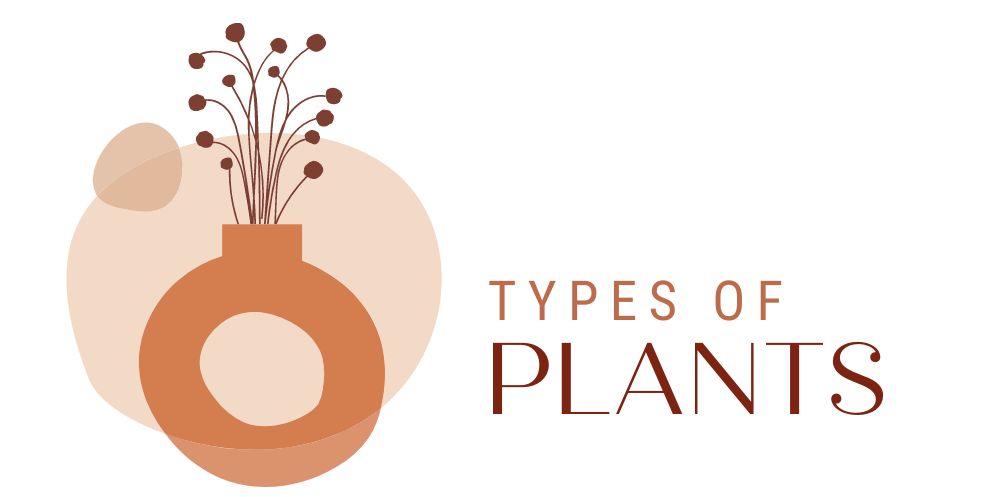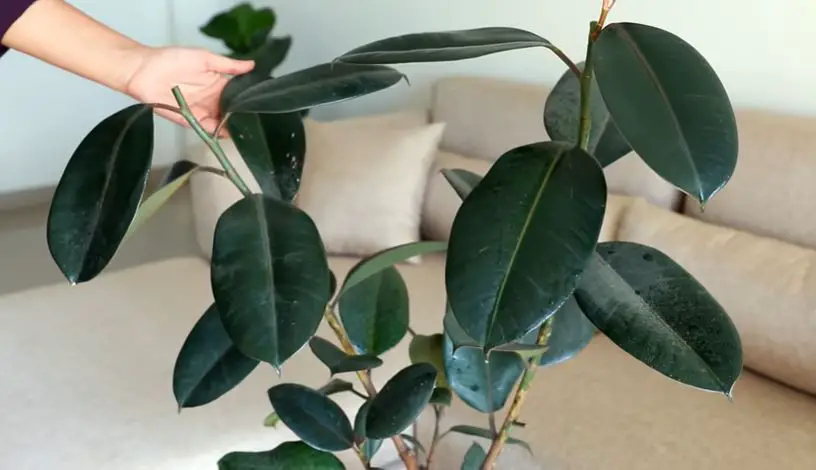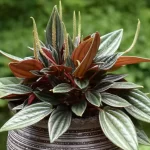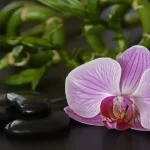Are you an avid plant collector and are in search of a new house plant addition? Look no further and opt for a lovely rubber plant. These pretty plants offer a different structure than other plants, but it is also regarded as one of the most popular houseplants. Continue reading and learn more about different types of rubber plants.
If you are determined to get a houseplant, you can’t go wrong with different types of rubber plants. Whether you’re expanding your collection or simply starting, a rubber plant is a must. This group of plants is one of the most frequently seen in homes and offices all over. And there’s good reason; a live rubber plant is a low maintenance houseplant; furthermore, rubber plants look great with their waxy foliage and also remove pollutants from the indoor air.
With numerous types, it can be pretty tricky to identify them. One thing is for sure; you’ll find a type that suits every modern interior and therefore your excellent taste. Discover how types of rubber plants can enhance your decor, purify the air at home and elevate your plant collection to the next level.
Types of Rubber Plants
Burgundy Rubber Tree Plant
Ficus elastica is the classic Rubber Tree, Rubber Plant, or India Rubber Plant. Native to India and Malaysia, elastica is among the oldest plants used as houseplants worldwide.
As a houseplant, Ficus is very popular. Able to adapt to and endure lower light conditions and generally poor treatment, The Rubber Tree is a winner indoors.
Provide as much light as possible, keep away from cold and drafts in winter, keep the soil lightly to moderately moist with good drainage.
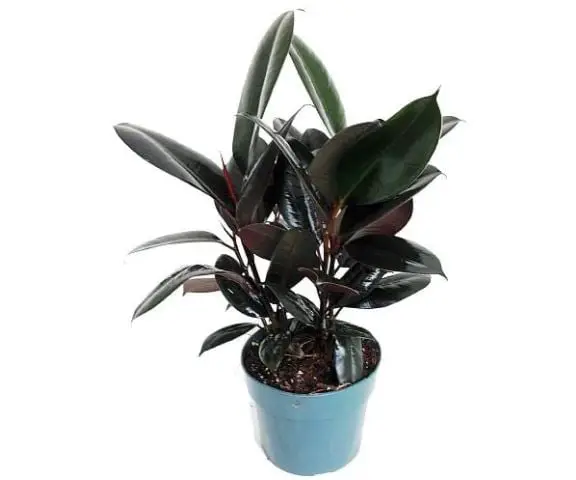
Features:
- Easy to grow
- Great for the house, apartment, office, or dorm
- Provide bright
Ficus elastica ‘Ruby’ – Variegated Rubber Tree
Ficus elastica’ Ruby’ – Variegated Rubber Tree is a newer variety of more commonly kept types.
Keep in smaller pots to contain growth. The thick, rubbery leaves with a white variegated pattern and red/pink undertones can get 8-12″ long and 4″ wide. It should be placed in bright lighting, which will enhance the reddish color tones.
Water when soil becomes dry. This plant is considered to be top of the list for air purifying.
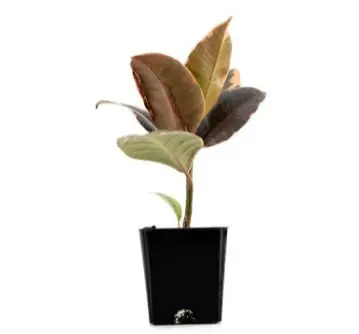
Features:
- Air purifying
- Easy to grow
- Variegated foliage
Ficus elastica ‘Tineke’ – Tineke Rubber Tree
Ficus elastica’ Tineke Rubber Plant’ is a newer variety of more commonly kept types.
Since this plant is slow-growing, it can be kept as a long-term house tree. It will grow faster and more significant in bigger pots and smaller and slower in smaller pots.
It should be placed in bright lighting, which will enhance the reddish color tones. It is straightforward to care for and will do fine if it is only watered when the soil becomes dry.
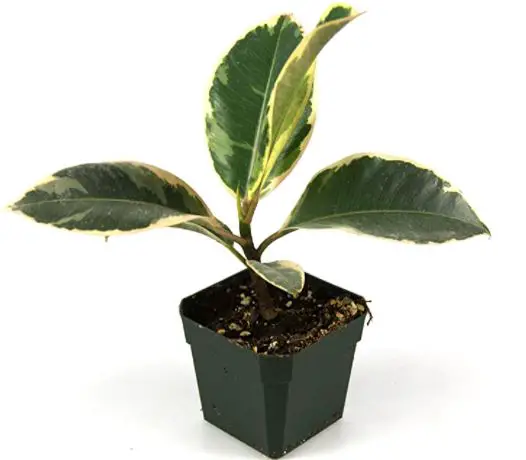
Features:
- Easy care
- Air purifying
How to Care for Rubber Plants?
Water
Rubber plants like consistently moist but never soggy soil. You should water your plant thoroughly when you notice the top inch of soil has dried out, allowing any excess water to drain from the pot.
Light
Rubber plants love a lot of bright, indirect light, so a spot next to a window with a sheer curtain or a southern exposure just out of direct sunlight is what you’re aiming for. Be sure to monitor your chosen spot throughout the day to ensure direct sunlight does not infringe on the plant, as it can burn the leaves.
Suppose you have a variegated variety of Rubber plants. In that case, you will want to pay extra attention to your placement, as lots of bright, indirect light is needed for the plant to produce its variegated leaf pattern.
Soil
To help achieve the ideal moisture level for Rubber Trees, you will want to make sure they are planted in well-drained soil.
This typically means adding additional peat or perlite to a quality potting soil to achieve a mixture that retains moisture but doesn’t allow the plant’s roots to sit in standing water for too long.
Fertilizing
Fertilizing rubber plants will make them grow taller and bushier. Signs of under-fertilization include stunted growth, yellowing or browning leaves, and drooping leaves.
Fertilize rubber plants every two weeks during the growing season using a water-soluble houseplant fertilizer. The ideal fertilizer has a 24-8-16 ratio, which includes 24 percent nitrogen, 8 percent phosphorus, and 16 percent potassium.
Propagating
Cut off a stem and dip it in a rooting medium after the sap has dried. Make sure each cutting is at least 6 inches long and includes four leaf nodes. Remove the bottom leaves from the cutting, leaving 2 or 3 leaves at the top.
Plant the stem in soil and consider placing its container on a heating pad to encourage rooting.
Common Questions About Types of Rubber Plants
How many types of rubber plants are there?
There are many different varieties of Rubber Tree plants, the most common being the green-leafed Robusta and Decora. While all Rubber Trees are similar in shape, growth, and care, you can choose varieties that differ in leaf shape, height, and color.
Rubber Tree plants are part of the Ficus family, containing about 850 different trees, fruiting figs, and houseplants, including everyone’s favorite, the Fiddle Leaf Fig. Specifically, Rubber Tree varieties fall under the species Ficus elastica.
Where do rubber plats come from?
Wild Rubber Trees are native to South and Southeastern Asia and grow very tall, typically up to 130 feet. Once utilized in rubber production due to latex in the tree’s sap.
When did rubber plants become popular?
The Rubber Tree plant had its first absolute peak in popularity back in the 1950s and 60s, as indoor cultivars became more readily available and folks were looking for lovely structural plants to match their mid-century modern vibes.
Ornamental Rubber Trees have been cultivated over many years to stay at manageable sizes inside your home. As more and more people started keeping Rubber Trees in their plant collections.
How do you identify a rubber plant variety?
The thick, leathery, oval-shaped large leaves with attractive colors or patterns are the main attraction of a rubber plant, but some have bright red or orange leaf sheaths. They enclose unopened leaves in a tight roll and stand out like colorful candles among the dark foliage.
What is the difference between Burgundy and Black Prince rubber plants?
Burgundy rubber plants are easily identified by their color. Despite their name, the leaves range from Black to green. If your burgundy rubber plant is mainly becoming green, it is likely due to a lack of light. The plant will usually grow fine either way.
What is the common name of rubber plant?
Ficus elastica, commonly called India rubber plant, India rubber tree, or India rubber fig, is native to Malaysia, Sumatra, and Java from the Himalayas. It is a broadleaf evergreen shrub or tree that may grow to 50-100′ tall in its native habitat. It is widely grown in the tropics as an ornamental tree.
What are the most common types of rubber plants?
Ficus elastica Robusta
‘Robusta’ is a hardy ficus elastica variety with leathery sizeable green foliage. It can easily withstand low humidity indoors and also attains a good height of 4-6 feet.
Ficus elastica Tricolor
This beautiful variety features bright, variegated, thick leathery leaves with a waxy surface. The foliage has a remarkable combination of green, pink, and cream.
Ficus elastica Tineke
It is a variegated variety displaying dark and light green patchy leaves with creamy margins and pink stems. The plant looks fabulous in small planters.
Ficus elastica Decora
Decora is famous for shiny, thick, dark green leaves that can grow up to a foot long. The plant looks quite beautiful in basket planters.
Ficus elastica Doescheri
It offers evergreen blotched foliage with narrow edges in a cream-white hue. The leaf stalk has a midrib with pink undersides.
Ficus elastica Burgundy
As the name suggests, ‘Burgundy’ exhibits deep, thick, burgundy to almost black foliage on the red stems. Give it bright light and ample humidity for the best foliage color.
Ficus elastica Abidjan
The large glossy leaves of this ficus elastica are flushed in a burgundy-bronze hue. It is also one of the best plants for filtering and purifying indoor air.
Ficus elastica Melany
The deep glossy green leaves of this specimen have a slight burgundy hue to them. It grows dense and does well in lower light conditions.
Ficus elastica Red Ruby
This charming variety offers large dark green leaves densely variegated with purple, red, and white hues. The new leaves emerge in a brilliant shade of pink-red.
Ficus elastica Black Prince
As the name signifies, the dark green leaves of this plant look almost black from a distance. Provide a lot of bright and indirect light for optimum growth.
Ficus altissima Yellow Gem
This bold and beautiful rubber plant has leathery, green-centered leaves with a golden-green hue at the borders. It is easy to grow and looks excellent in large planters.
Read: Types of Spider Plants
